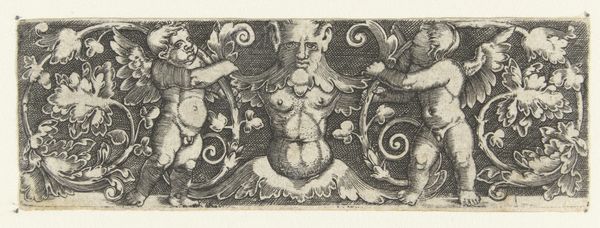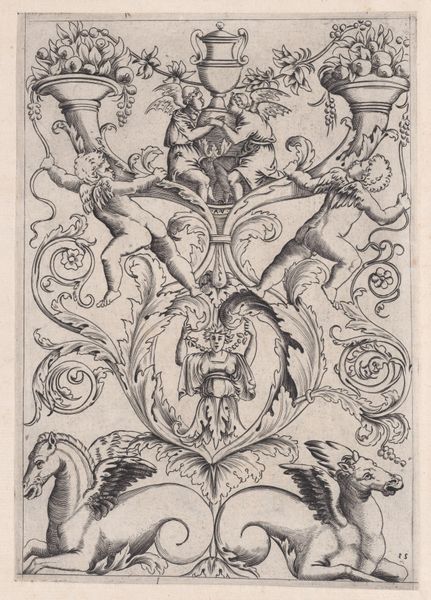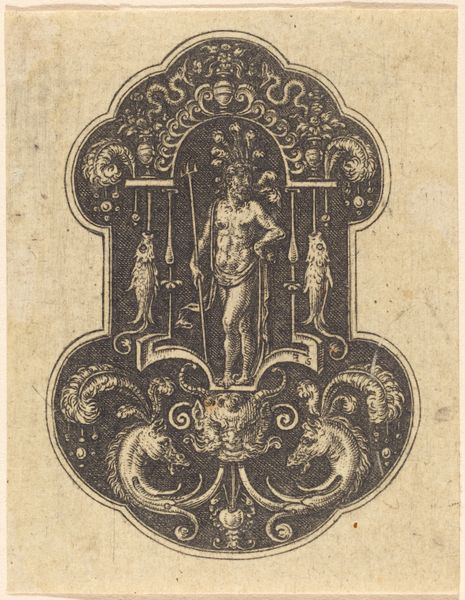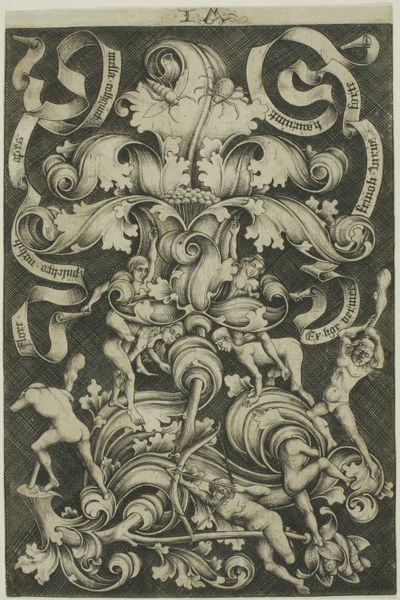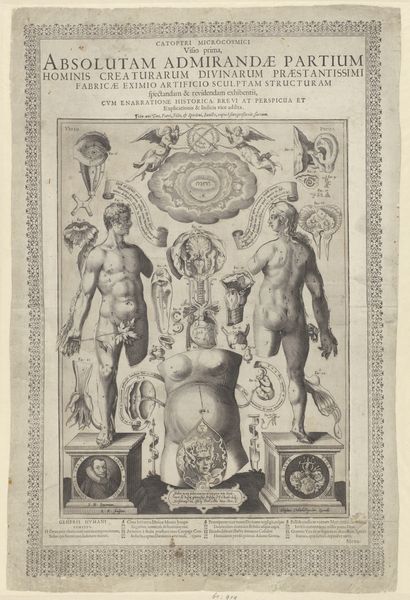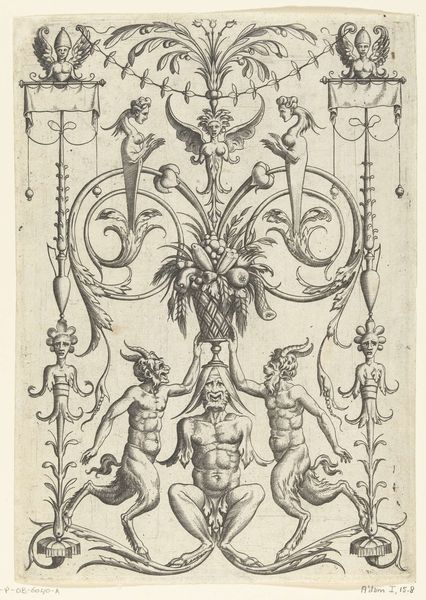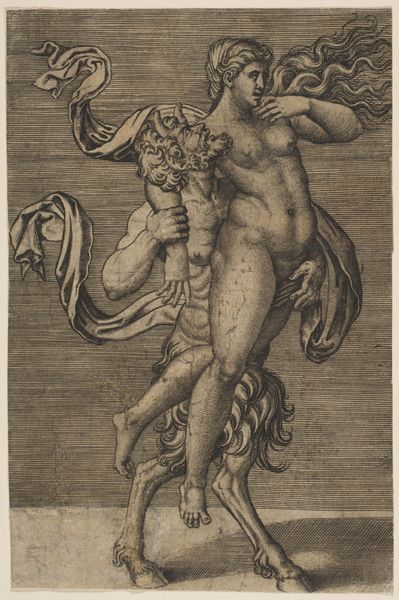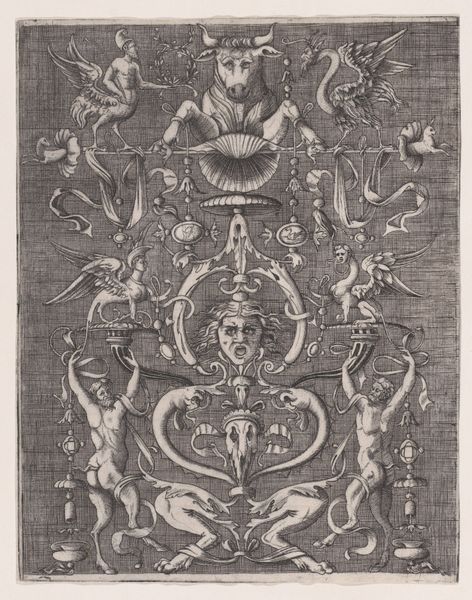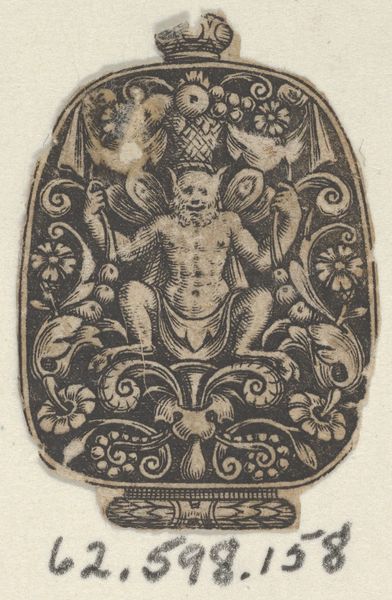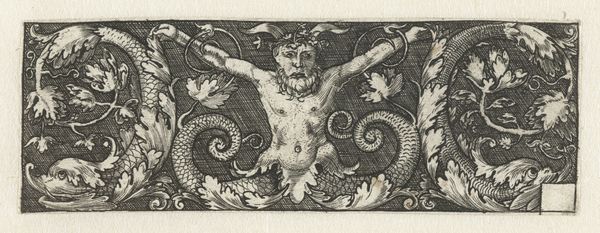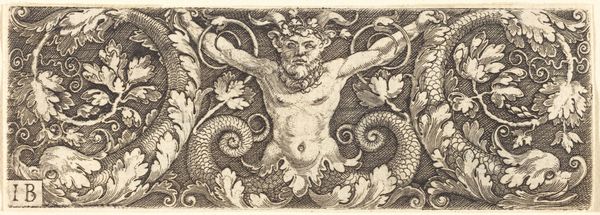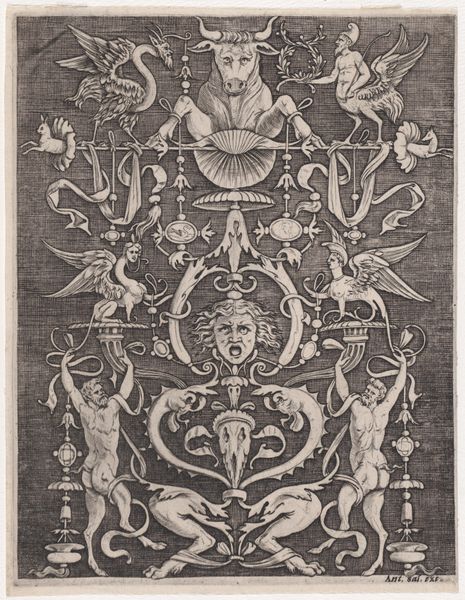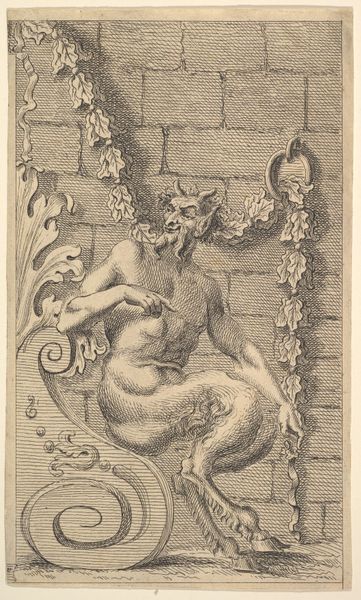
drawing
#
portrait
#
drawing
#
baroque
#
caricature
#
figuration
#
form
#
portrait drawing
#
academic-art
#
italian-renaissance
#
portrait art
#
miniature
Dimensions: 201 mm (height) x 132 mm (width) (bladmaal)
Giovanni Domenico Capellino created this pen and brown ink drawing of a cartouche with a putto sometime in the 17th century. Capellino worked in Genoa during a time of significant social and political change, marked by the lingering influence of the Renaissance and the emergence of the Baroque style. This drawing presents a cartouche, an ornamental frame, featuring a plump putto at its center. During the Renaissance, the putto was a symbol of divine love, but by the 17th century, it had become a more secular symbol, often associated with prosperity. The putto's nakedness and childishness present an idealized form of the human figure, yet we should ask: whose ideals are being represented? Historically, these images have been employed to reinforce notions of beauty that exclude many. This drawing invites us to consider how such representations shape our understanding of the human body, and how this visual culture can exclude individuals who don't fit these narrow ideals.
Comments
No comments
Be the first to comment and join the conversation on the ultimate creative platform.
